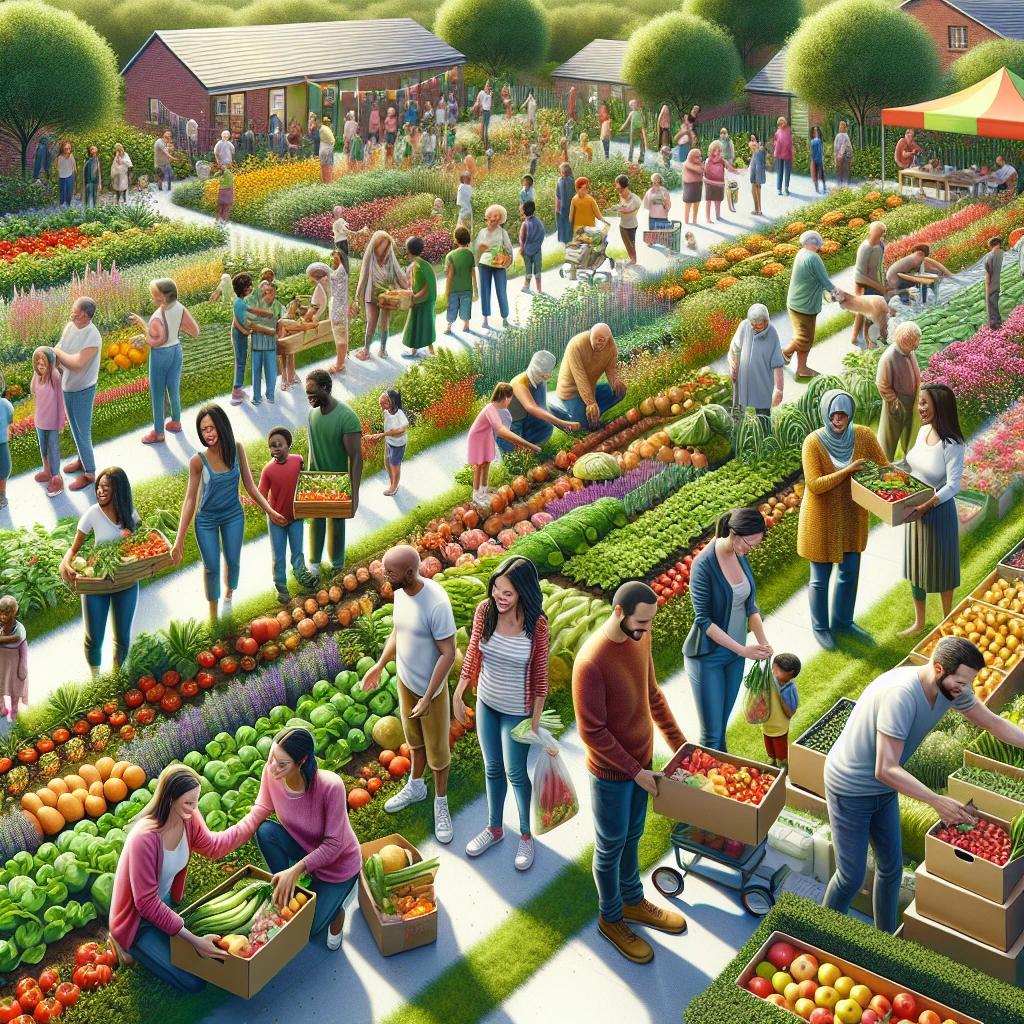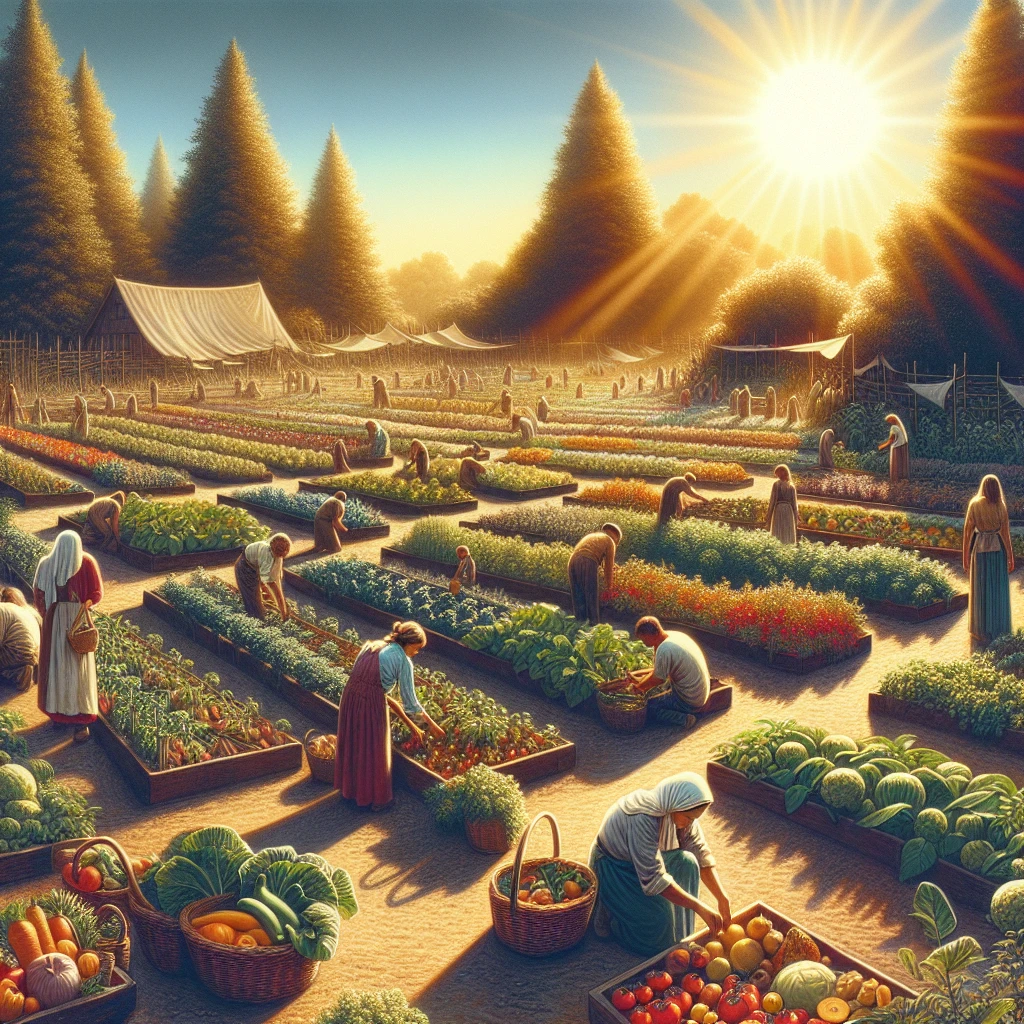

The USDA food insecurity definition refers to the limited or uncertain availability of nutritionally adequate and safe foods, or the limited or uncertain ability to acquire acceptable foods in socially acceptable ways. It is a household-level economic and social condition of limited or uncertain access to adequate food.
Food insecurity is important to understand because it can cause serious health issues, make it more difficult for a child to learn and grow, and lead to difficult decisions like choosing between food and essential expenses like rent, bills, and transportation. It is also associated with increased risk for multiple chronic health conditions such as diabetes, obesity, heart disease, mental health disorders, and other chronic diseases.
Understanding food insecurity is crucial in addressing the implications it can have on health, beyond just poor nutrition, and the toll it can take on health care resources and spending. This understanding also helps in developing strategies and interventions to ensure access to affordable nutritious food for all individuals and households.
Check out this Youtube video: Learn more about the USDA food insecurity definition and the development of new measures to complement it.
What is USDA Food Insecurity Definition?
Food insecurity, as defined by the USDA, refers to the limited or uncertain access to nutritionally adequate and safe foods, as well as the limited or uncertain ability to acquire acceptable foods in socially acceptable ways.
Definition of food insecurity by the USDA
The USDA defines food insecurity as a household-level economic and social condition of limited or uncertain access to adequate food. This is the condition assessed in the food security survey and represented in USDA food security reports.
It’s important to note that food insecurity doesn’t necessarily cause hunger, but it can lead to hunger as a possible outcome.
Factors that contribute to food insecurity
Food insecurity can stem from various factors including income, employment, race/ethnicity, disability, and temporary or long-term situations. For instance, low income levels, lack of stable employment, and racial disparities can greatly contribute to food insecurity.
Individuals and families affected by these factors often struggle to access enough food for a healthy life.
| Factor | Impact |
|---|---|
| Income | Low income levels have a direct impact on food insecurity as it limits the ability to afford an adequate amount of food. |
| Employment | Unemployment or unstable employment can lead to financial instability, making it difficult to consistently access enough food. |
| Race/Ethnicity | Racial and ethnic disparities can result in unequal access to resources, including food, leading to food insecurity within specific demographic groups. |
Understanding the Meaning of Food Insecurity
Food insecurity refers to the limited or uncertain access to nutritious food, which includes restrictions on obtaining food in socially acceptable ways. It is not just about the absence of food but also the lack of consistent access to enough food for an active, healthy life.
This issue affects a significant portion of the global population, with over 2.4 billion people experiencing moderate or severe food insecurity, primarily concentrated in developing countries. In the United States, approximately 17.3% of households with children faced food insecurity in 2022, highlighting the widespread impact on individuals and communities.
Impact of food insecurity on individuals and communities
Food insecurity has a profound impact on individuals and communities, leading to increased levels of psychological distress, anxiety, and depression. Additionally, it can result in micronutrient deficiencies, lower diet quality, and poorer physical and mental health outcomes.
The lack of access to nutritious food affects the overall well-being, productivity, and vitality of communities, perpetuating a cycle of adversity.
Psychological and health effects of food insecurity
The correlation between food insecurity and psychological health is striking, with individuals experiencing a 257% higher risk of anxiety and a 253% higher risk of depression. This condition not only affects physical health but also takes an immense toll on mental well-being, especially among young people.
Psychological distress, including mental health issues like depression and anxiety, is a direct consequence of food insecurity.
Comparison of food insecurity in different demographics
Food insecurity rates differ across demographics, with disparities observed among various racial and ethnic groups. For instance, family food insecurity was higher among non-Hispanic Black and non-Hispanic other/multiple races compared to non-Hispanic White and non-Hispanic Asian adults.
These discrepancies are influenced by drivers such as poverty, unemployment, and household assets, leading to demographic variations in the prevalence of food insecurity.
| Demographic | Food Insecurity Rate |
|---|---|
| Non-Hispanic Black | 12.2% |
| Non-Hispanic White | 4.1% |
| Non-Hispanic Asian | 3.7% |
Food insecurity poses a significant challenge globally, impacting the physical and mental well-being of individuals and communities. Understanding the far-reaching effects and demographic variations of this issue is crucial in formulating targeted interventions and support systems to address the root causes and alleviate its widespread impact.
USDA Food Insecurity Definition and Hunger
Food insecurity is the limited or uncertain availability of nutritionally adequate and safe foods, or limited or uncertain ability to acquire acceptable foods in socially acceptable ways. It’s a household-level economic and social condition of limited or uncertain access to adequate food.
Hunger, on the other hand, is an individual-level physiological condition that may result from food insecurity.
The relationship between food insecurity and hunger
When someone is severely food insecure, they have run out of food and gone a day or more without eating, leading to experiencing hunger. In other words, food insecurity can result in hunger, as it signifies a consistent lack of food to maintain a healthy life due to economic circumstances.
How food insecurity differs from hunger
Food insecurity is a broader household-level economic and social issue related to limited or uncertain access to adequate food, while hunger is the individual-level physiological condition resulting from food insecurity. Therefore, food insecurity refers to the consistent lack of food to have a healthy life due to economic situation, while hunger is the feeling someone has when they don’t have food.
| Food Insecurity | Hunger |
|---|---|
| Household-level economic and social condition | Individual-level physiological condition |
| Limited or uncertain access to adequate food | Resulting from food insecurity, i.e., lack of food |
Measurement of Food Insecurity
Food insecurity is generally measured using the Food Insecurity Experience Scale (FIES) by the FAO, which covers aspects such as having enough food, dietary quality, and variety. It encompasses households worrying about food running out and the adequacy of their dietary options.
Methods used to measure food insecurity
The methods commonly employed to measure food insecurity include individual or household surveys, with indicators that encompass the availability of safe and nutritionally adequate foods, along with the ability to acquire acceptable foods in socially acceptable ways. The USDA utilizes an experimental classification method for classifying food security status in households with children.
Data collection and analysis by the USDA
The USDA collects and analyzes data on food security through national food security surveys. The statistics are based on a national food security survey conducted as an annual supplement to the monthly Current Population Survey.
Additionally, the USDA’s Economic Research Service (ERS) plays a leading role in researching food security and food security measurement in U. S. households and communities.
| Data Collection and Analysis by the USDA | |
|---|---|
| Method | Type |
| National food security survey conducted as an annual supplement to the monthly Current Population Survey (CPS) | Survey |
| Leading role in research on food security and food security measurement in U. S. households and communities | Research |
Food insecurity measurement methods encompass surveys, scale-based indicators, and experimental classification, and the USDA plays a crucial role in collecting and analyzing data related to food security in the United States.
Historical Perspective on Food Insecurity
The evolution of the USDA’s definition of food insecurity has been crucial in understanding and addressing the issue. Initially, food insecurity was merely seen as a household-level economic and social condition, indicating limited or uncertain access to adequate food.
However, this narrow definition failed to capture the full extent of the problem, leading to a shift in focus over time.
As perceptions surrounding food insecurity evolved, it became evident that hunger is an individual-level physiological condition resulting from food insecurity. This shift in understanding highlighted the need to address not only the economic and social aspects of food insecurity but also its direct impact on individuals’ well-being.
Consequently, this broadened perspective drove the development of more comprehensive interventions and policies aimed at combating food insecurity at both the household and individual levels.
The USDA’s definition of food insecurity has evolved from a household-level economic and social condition to encompassing the individual-level physiological impact. This shift in perception has significantly influenced the approach to tackling food insecurity, emphasizing the need for multifaceted interventions that address both the social and physiological dimensions of the issue.
| Definitions of Food Security |
|---|
| Initially viewed as a household-level economic and social condition, the definition has expanded to include the individual-level physiological impact of hunger. |
This change in perspective has been instrumental in shaping policies and interventions addressing food insecurity, paving the way for more comprehensive approaches to combat this critical issue.
Examples of Food Insecurity
Unfortunately, food insecurity is a stark reality for many individuals and families across America. Real-life examples of food insecurity include situations where families are forced to choose between paying bills and buying food due to unexpected expenses like car repairs or medical emergencies.
These unforeseen circumstances can push them to the brink, making it challenging to afford an adequate supply of food.
Real-life examples of food insecurity
For example, a single mother facing job loss may find it difficult to provide consistent, nutritious meals for her children. Similarly, a senior citizen on a fixed income might struggle to balance the cost of medication with purchasing enough food to maintain a healthy diet. These real-life scenarios illustrate the harsh impact of food insecurity on everyday lives.
Another example is a college student managing tuition fees and housing costs, often forced to skip meals to make ends meet. These experiences shed light on the diverse situations that contribute to food insecurity in the United States.
Stories of individuals affected by food insecurity
One individual’s story showcases the hardships faced by those dealing with food insecurity. A hardworking individual who previously never imagined needing assistance finds themselves relying on food banks to feed their family after being laid off. Their story highlights the unpredictability and emotional strain of grappling with food insecurity.
Another individual’s narrative involves a family struggling to stretch their budget as essential expenses continue to rise. Despite diligent efforts, they find themselves sacrificing the quality and quantity of their meals to manage through tough times. These personal stories provide a glimpse into the widespread impact and challenges faced by those affected by food insecurity.
To put it into perspective, here’s a table contrasting the availability of adequate food with the lived experiences of those grappling with food insecurity:
| Food Availability | Food Insecurity |
|---|---|
| Consistent access to nutritious meals | Uncertain access to sufficient food |
| Comfortable meal planning | Need to skip meals to meet other financial obligations |
| Varied diet with fresh produce and proteins | Limited food options, reliance on low-cost, processed foods |
Addressing Food Insecurity
Government programs and initiatives to combat food insecurity
- The U. S. Department of Agriculture (USDA) has implemented several federal food assistance programs to combat food insecurity and ensure struggling families can access nutritious food.
- The Supplemental Nutrition Assistance Program (SNAP) is a key initiative that provides food-purchasing assistance for low-income individuals and families.
Community efforts to alleviate food insecurity
- Community gardens and urban agriculture projects play a significant role in addressing food insecurity by promoting local food production and availability.
- Community-driven approaches, including advocacy, nutrition, and income supports, are essential for ensuring access to adequate and nutritious food for all individuals.
| Federal Programs | Community Efforts |
|---|---|
| SNAP | Community Gardens |
| TEFAP & WIC | Urban Agriculture |
| National School Lunch Program | Community-Driven Approaches |
The combination of federal programs and community efforts is crucial in addressing food insecurity and ensuring that individuals and families have consistent access to nutritious food for a healthy and active life.
Statistics on Food Insecurity
Current statistics on food insecurity in the United States
According to the latest data, 7.7 percent (10.2 million) of U. S. households experienced low food security in 2022. This marks a significant increase from 6.4 percent (8.4 million) in 2021. Additionally, 34 million people in the United States are currently facing food insecurity, highlighting the magnitude of this issue.
Trends in food insecurity over the years
The prevalence of food insecurity has been on the rise, with the 2022 statistics showing a notable increase compared to previous years. In 2022, the prevalence of food insecurity reached 12.8 percent, significantly higher than the 10.2 percent (13.5 million) recorded in 2021. These trends underscore the ongoing challenges and the urgent need for action to address food insecurity in the United States.
Economic Impact of Food Insecurity
The cost of food insecurity to the economy
Food insecurity poses a significant cost burden on the economy. Studies have shown that food-insecure families incur approximately $2,500 more annually in healthcare costs compared to families with stable food access.
This places a substantial financial strain on both individuals and the healthcare system, affecting the overall economic landscape. Moreover, the long-term consequences of food insecurity contribute to increased rates of chronic diseases, leading to higher healthcare expenses and reduced workforce participation.
These cumulative effects further exacerbate the economic impact of food insecurity, highlighting the intricate link between access to adequate nutrition and economic stability.
Long-term implications of food insecurity on society
The long-term implications of food insecurity extend beyond individual health concerns, significantly impacting the broader fabric of society. Food insecurity not only hampers physical development but also hinders workforce participation and academic performance, particularly causing chronic school absences among affected children.
Additionally, it fosters chronic illnesses, resulting in substantial healthcare costs and economic repercussions. Moreover, the economic root causes of food insecurity, such as low wages and limited access to healthy foods, perpetuate societal inequalities and economic disparities, highlighting the pervasive impact of this issue on the overall societal framework.
USDA Food Insecurity Definition and Public Policy
The role of the USDA definition in shaping public policy
The USDA food insecurity definition plays a crucial role in shaping public policy by providing a standardized framework for identifying and addressing food insecurity at a national level. By defining and quantifying food insecurity, the USDA enables policymakers to understand the scope of the issue and develop targeted interventions.
This definition serves as a cornerstone for the development of programs and policies aimed at alleviating food insecurity, such as the Supplemental Nutrition Assistance Program (SNAP) and the National School Lunch Program, ensuring that resources are effectively allocated to those in need.
Policy implications of the USDA definition of food insecurity
The USDA’s definition of food insecurity has significant policy implications, guiding the allocation of resources, funding, and support to address this pressing issue. It informs the design and implementation of government assistance programs, influencing eligibility criteria and benefit levels.
Additionally, the USDA definition shapes public awareness and advocacy efforts by providing a common language and understanding of food insecurity, prompting policymakers to prioritize solutions and mobilize support. This definition also influences research initiatives, allowing for the systematic evaluation of the effectiveness of policies and interventions aimed at combating food insecurity.
The USDA definition drives informed policy decisions and actions to address food insecurity at both the individual and community levels.
| Policy Implications | Description |
|---|---|
| Resource Allocation | Guides targeted allocation of resources to combat food insecurity |
| Advocacy Efforts | Shapes public awareness and mobilizes support for policy interventions |
| Research Initiatives | Influences systematic evaluation of policy effectiveness in addressing food insecurity |
Societal Factors Contributing to Food Insecurity
Socioeconomic factors that contribute to food insecurity
The socioeconomic factors contributing to food insecurity encompass a multitude of challenges. Poverty, with its wide-reaching impacts on access to nutritious food, employment opportunities, and education, stands as a primary driver.
Low-income communities also grapple with limited access to healthcare and affordable housing, further exacerbating the issue. These barriers create formidable obstacles for individuals and families striving to secure an adequate and consistent food supply, perpetuating the cycle of food insecurity.
Environmental and geographical influences on food insecurity
Environmental and geographical factors play a crucial role in shaping food insecurity. Rural areas often face the challenge of limited access to healthy food sources, constricting the options available to residents.
Moreover, geographical factors such as climate change pose substantial threats to agricultural production, affecting the stability and utilization of the food system. These impacts, combined with soil erosion and water pollution, contribute to a complex web of environmental influences that profoundly impact food security on a global scale.
| Socioeconomic Factors | Environmental and Geographical Influences |
|---|---|
| 1. Poverty | 1. Limited access in rural areas |
| 2. Low income | 2. Climate change effects on agriculture |
| 3. Lack of healthcare | 3. Soil erosion and water pollution |
| 4. Affordable housing |
In essence, addressing food insecurity entails acknowledging and confronting these multifaceted societal challenges while developing sustainable solutions for the benefit of communities worldwide.
Debunking Misconceptions About Food Insecurity
Common misconceptions surrounding food insecurity
- Misconception 1: Only people who are homeless experience food insecurity.
-
Correction: In reality, food insecurity affects individuals from all walks of life. It doesn’t discriminate based on housing status, and many who are not homeless still struggle to access adequate food.
-
Misconception 2: Food insecurity can be solved through food alone.
- Correction: The truth is, food insecurity is a multi-faceted issue that requires comprehensive solutions. People affected often face tough choices between purchasing food, paying for transportation, utility bills, or medication.
Dispelling myths about who is affected by food insecurity
- Myth 1: Only people who are unemployed need food assistance.
-
Fact: Due to the high cost of living in certain areas, individuals don’t have to be unemployed to experience food insecurity. Employment does not guarantee food security.
-
Myth 2: You can tell when someone is food insecure.
- Fact: It’s not always visible when someone is food insecure. The struggle to access adequate food may not be evident from outward appearances.
| Myth | Fact |
|---|---|
| Food insecurity only impacts homeless individuals | Food insecurity affects individuals from all walks of life |
| Food insecurity can be solved through food alone | Food insecurity is a multi-faceted issue |
| Only unemployed individuals need food assistance | Employment does not guarantee food security |
| You can tell when someone is food insecure | The struggle may not be evident from outward appearances |
Moving Beyond the Definition
The implementation of practical solutions to address food insecurity involves a multi-faceted approach. Firstly, enhancing food assistance programs such as the National School Lunch Program (NSLP), Women, Infants, and Children (WIC) program, and Supplemental Nutrition Assistance Program (SNAP) is crucial.
These initiatives break down barriers to healthy food access, thereby directly impacting food security. Secondly, improving transparency and clarity in food safety through consistent labeling conventions helps consumers make informed choices, contributing to the reduction of food insecurity.
Implementation of practical solutions to address food insecurity
When addressing food insecurity in school settings, a model focused on providing access to nutritious food has shown promising results. By acknowledging and tackling the lack of or limited access to food in school environments, this approach directly targets the root of the issue, making progress in ensuring that children have access to the nourishment they need to thrive.
Long-term strategies for eradicating food insecurity
In the long run, eradicating food insecurity requires sustained efforts and systemic changes. Investing in smallholder farmers emerges as a potent strategy.
These farmers, prevalent in developing countries, often encounter obstacles that hinder their productivity and income. By providing support and resources to smallholder farmers, sustainable agriculture can be promoted, ultimately contributing to the global fight against food insecurity.
| Key Point | Description |
|---|---|
| Food Security | Boosting food security is pivotal in combatting hunger, especially with the exacerbation of malnutrition due to the COVID-19 pandemic. Strengthening global food systems and addressing economic disruptions are critical in addressing food insecurity. |
| Households | The prevalence of food insecurity in U. S. households remains a pressing concern, with a reported 12.8% of households experiencing food insecurity in 2022. This underscores the persistent need for effective, long-term strategies to combat food insecurity. |
Recommended Amazon Products for Addressing Food Insecurity
Here’s a curated list of products that can help in addressing food insecurity with ease. These recommendations are based on functionality, price, and reviews.
OXO Good Grips GreenSaver Produce Keeper


The OXO Good Grips GreenSaver Produce Keeper is recommended for prolonging the freshness of fruits and vegetables, helping individuals and families make the most of their food resources. Its innovative design and excellent customer reviews make it a top choice.
Rice Cooker


A rice cooker is a versatile and affordable kitchen appliance that can help individuals prepare large batches of rice, a staple food item, with ease. With various models and sizes available at different price points, it offers a convenient solution to ensure access to a nutritious and filling food item.
FoodSaver Vacuum Sealer


The FoodSaver Vacuum Sealer is a highly efficient tool for preserving food items and reducing waste. By extending the shelf life of perishable items, it contributes to minimizing food insecurity through efficient food management.
Instant Pot


The Instant Pot is a multipurpose kitchen appliance that simplifies the process of cooking a wide variety of dishes. Its time-saving capabilities and versatility in preparing different types of food make it an excellent resource for individuals and families facing food insecurity.
Food Storage Containers


A set of durable and reusable food storage containers can aid in organizing and storing prepared meals, leftovers, and ingredients. This promotes efficient meal planning and management of limited food resources, addressing food insecurity.
Top Recommended Product for Addressing Food Insecurity
If you’re looking for the best solution for addressing food insecurity, we highly recommend the OXO Good Grips GreenSaver Produce Keeper. Its innovative design and excellent customer reviews make it a top choice for prolonging the freshness of fruits and vegetables, helping individuals and families make the most of their food resources.
Ready to improve your efforts in addressing food insecurity? Check out the OXO Good Grips GreenSaver Produce Keeper today for the best results!
Pros and Cons Table:
| Product | Pros | Cons |
|---|---|---|
| OXO Good Grips GreenSaver Produce Keeper | – Innovative design | – Initial cost |
| Rice Cooker | – Versatile and affordable | – Requires storage space |
| FoodSaver Vacuum Sealer | – Extends shelf life | – Initial cost and maintenance |
| Instant Pot | – Multipurpose use | – Learning curve for new users |
| Food Storage Containers | – Organizes and stores food efficiently | – Requires additional maintenance |
The OXO Good Grips GreenSaver Produce Keeper emerges as the top recommended product due to its innovative design and excellent customer reviews.
Conclusion
The USDA food insecurity definition provides the framework for understanding and measuring the extent of food insecurity in the United States. It helps to identify individuals and households who lack consistent access to enough food for an active, healthy life.
This definition allows policymakers, researchers, and organizations to develop targeted interventions and programs to address the problem of food insecurity in the country.
Furthermore, the USDA food insecurity definition highlights the complex and multi-dimensional nature of food insecurity. It takes into account various factors such as economic conditions, access to food, and individual circumstances that contribute to the lack of food security.
This comprehensive approach is essential in developing effective and sustainable solutions to alleviate food insecurity among different populations and communities.
The USDA food insecurity definition serves as a valuable tool in raising awareness, conducting research, and implementing policies to combat food insecurity in the United States. By providing a clear understanding of the challenges faced by food-insecure individuals and households, this definition lays the groundwork for creating a more equitable and food-secure society.















